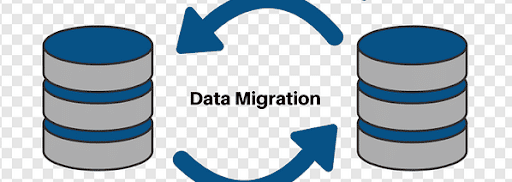SAP Data Services is a software application that is used mainly to integrate and transform data. It helps users to develop and execute workflows to extract SAP data from different sources such as web services, databases, applications, and data stores. Later, this extracted data can be combined, transformed, and processed for real-time business analytics.
Apart from the standard data transformation like joins, aggregations, calculations, lookups, and filters, there are several other functions of SAP data. Text analysis, auditing, and conducting data quality operations like matching, data profiling, addressing standardization, and geocoding are some of them. SAP data also supports Change Data Capture (CDC), a feature that offers input data to stream-processing systems and data warehouses.
SAP data is also widely used for real-time services that allow applications to query Data Services thereby getting an instant response depending on a pre-defined workflow as well as batch processing, the older approach to data transformation.

What is SAP Extractor
Known as “BW Extractor” in the past, SAP Extractor is a data management feature of SAP that is typically used to extract SAP data from source systems to be stored in business intelligence systems or downstream data warehouses. The purpose of the launch of SAP Extractor was mainly to extract SAP data for feeding SAP BW applications. If an SAP client does not use BW, this option enables integrating data with an SAP Extractor.
The Use of the SAP Extractor
The SAP Extractor is a program in SAP ERP that can be activated to extract SAP data and transfer it to BW. The Extractor can either be a customized DataSource that details a full load and delta load process of different types or a standard DataSource. The SAP BW remotely controls the data transfer component of the program. The Extractor also populates the delta queue with new and changed records when it is of the delta type. The data can then be transferred to SAP BW simply through a data transfer remote call.
The load process with an InfoPackage in the scheduler has to be defined to extract SAP data and transfer it to the input layer of SAP Business Warehouse also called the Persistent Staging Area (PSA). When the InfoPackage has to be implemented with process chains being used for executions, the data load process is triggered by a request IDoc to the source system.
Types of SAP Extractors
There are three main ways to extract SAP data using SAP BW Extractors.
The first is Application Specific Content Extractors that are used for extraction of BW content, FI, HR, CO, SAP CRM, and LO cockpit. The second is Application Specific Customer-Generated Extractors that are primarily used for LIS, FI-SL, and CO-PA. Finally, there are the Cross Application Generic Extractors that function on the DB View, Infoset, and Function Modules.
The Functioning of the SAP Extractor
Several extractors to extract SAP data are specific to applications and are hard-coded for the Data Source to be delivered with the BI Content of the Business Warehouse. They precisely match the architecture of the Data Source. Further, it is also possible to use the various forms of Extractors to extract SAP data and move it to BW. SAP Extractors are fully automated and after the generic extractor names the Data Source, they can identify which data has to be extracted and the tables from where data is read-only.
A user can, regardless of the application used, extract SAP data with an Extractor that consists of master data attributes or texts, transaction data from all transparent tables, database views, or SAP query functional areas. For these data types, the Data Source can generically read and transfer the data to the BW.
The SAP Extractor with its many cutting-edge features has been unbeatable over the years as an Enterprise Resource Planning (ERP) product. No other competitors like Oracle, Microsoft, and Salesforce have even managed to come close with an ERP system.
The SAP ETL Tool
Knowing about the optimized ways to extract SAP data will not be complete without a word on the SAP ETL tool. ETL is an acronym for Extract, Transform, and Load and is an optimized tool to extract SAP data from multiple sources, transform the data, and load it into a data warehouse or a central storage repository. The main advantage of the SAP ETL tool is that it can extract SAP data in its native format regardless of whether it is in an unstructured, semi-structured, or structured form. It then processes and transforms the data to match the architecture of the intended target and finally loads it into the defined repository.
The SAP ETL tool can be used to move data within the SAP ecosystem and run checks to clean the data and confirm if the value of a name has been defined. The unique benefit of the tool is that it can extract SAP data and transform it even from outside the application.
The SAP ETL tool, apart from helping to extract SAP data and therefore transform and load it into an intended target, has several benefits. SAP data extraction and extracting incremental and change data or deltas through the OData Services can be fully automated as the tool can be connected to CDS views and SAP Data Extractors. Further, the SAP ETL tool can be used to migrate data from SAP or non-SAP sources to target the HANA database through the SAP Data Services. This ensures that businesses can run data analytics in the application layer only.
Summing up, it can be said that primarily, the SAP Extractor has evolved for meeting the unique needs of the SAP Business Warehouse.

Hello, My name is Shari & I am a writer for the ‘Outlook AppIns’ blog. I’m a CSIT graduate & I’ve been working in the IT industry for 3 years.